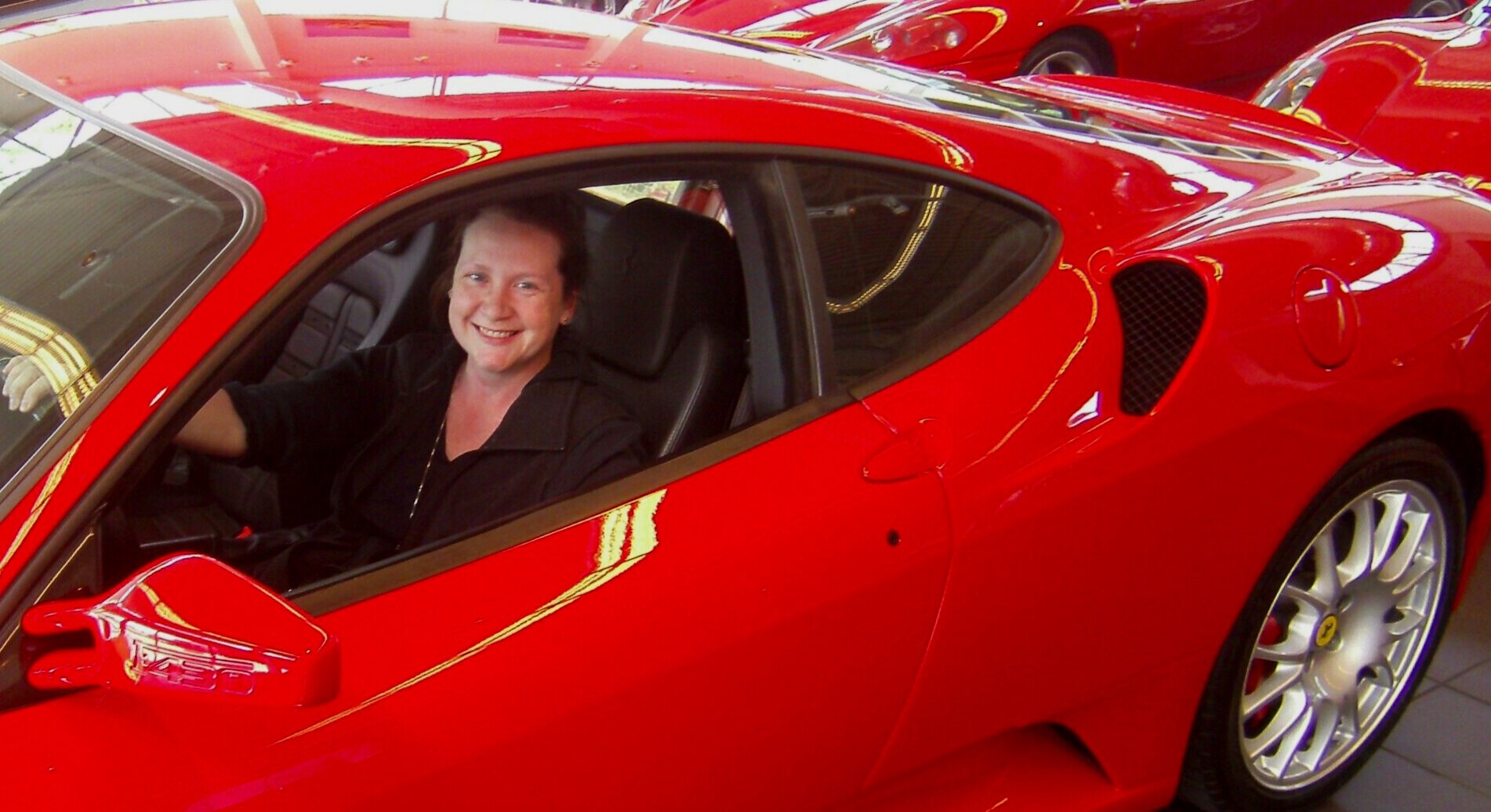In the showroom of Ferrari of Atlanta. Have mercy, that was a sweet car.
“Fasten your seatbelt,” my driving coach said as he climbed behind the wheel.
He didn’t have tell me twice. He didn’t have to tell me at all. I knew exactly what a Ferrari 360 Modena was capable of doing — zero to sixty in 4.3 seconds, with a top speed of 190 mph. I also knew that after our first lap around the course, I’d switch places with him, and I’d be the one in the driver’s seat.
He looked over at me, surprised to see a notebook on my lap. “You’re gonna take notes?”
I nodded. “I’m a writer. We do that.”
And then I explained that I wrote mysteries, and that despite the grin on my face, I was in that bright yellow Ferrari doing serious research for my Tai Randolph & Trey Seaver series. After all, Trey—my Special Op trained, former SWAT co-protagonist—drives a 2008 Ferrari F430 coupe. And while my girl Tai has yet to get her eager fingers wrapped around its steering wheel, she eventually will. And I, her writer, need to be able to describe that experience.
I explained all this to my driving coach as he fastened his own seatbelt. “Cool,” he said. And then he slipped the car into gear, opened up the throttle, and my notebook hit the floor.
For the next sixty seconds, my life condensed to whiplash turns and lightning acceleration. I remember my stomach somersaulting with each twist and angle, the irresistible forces of velocity and trajectory combining in a giddy-making head rush. When we eventually slammed to a stop, my driver told me he’d been taking the car to only 80% of its capacity. And then he helped me out of my seat.
“Your turn,” he said, and grinned.
I slipped into the driver’s seat, feeling the vibrations of the engine, which is mounted right behind you, a V-8, pistons pumping, motor growling. Driving a Ferrari is a sensual delight—the leather seat molding to your body, the heat waves shimmering up from the engine, the throaty roar that peaks in a banshee shriek, like a chainsaw mated with a sonic boom. It’s primal, animal, atavistic, all blood rush and adrenaline surge. But a Ferrari isn’t some wanton, reckless beast—it wants to be controlled. And even on a simple agility course like I was running, you can feel how much performance the car is giving you, how much more it’s got to give. You push the accelerator a half an inch, and the car rewards you with a screaming, high-octane mile in return.
I drove my yellow and black fireball as cautiously as any stereotypical granny, considering it was worth over a hundred thousand dollars. But even at relatively tame speeds, I could feel its exquisite responsiveness, as if it were a live thing, as if it could read my mind. My coach warned me to keep my eyes on the lane and not on the obstacles, because the car would go where I looked. He also guided me through the turns—when to slow, when to punch it—and I had to trust him, because every instinct I had was screaming turn-turn-turn-now-now-now and he was saying wait-wait-wait. But when I trusted his instructions, I could feel the car moving into the curve, aligning itself with the centripetal and centrifugal forces. Becoming, indeed, one with the road.
I climbed out of that Italian leather seat with a true understanding of “la dolce velocita”: the sweet speed. And I know my girl Tai is going to be utterly blown away when she finally gets to drive this work of automotive art for herself. She’ll forgive every inconvenient corpse I’ve ever dropped in her path, I am certain of it.


